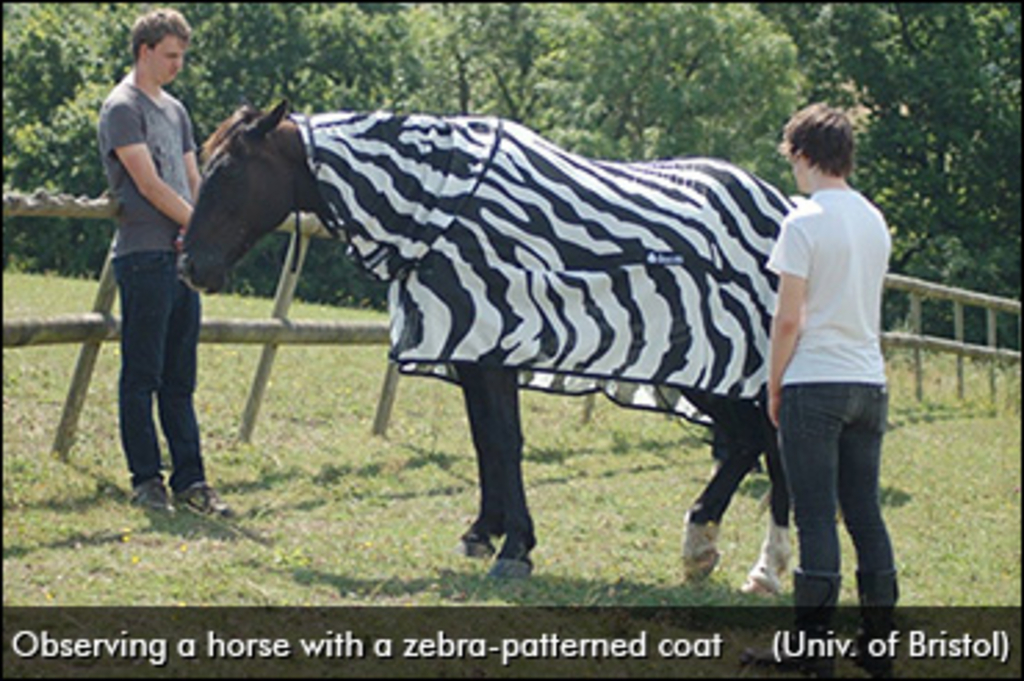
 After years of research, scientists finally have insight into the reason why zebras have stripes and horse owners might want to pay attention.
After years of research, scientists finally have insight into the reason why zebras have stripes and horse owners might want to pay attention.
According to studies performed by researchers at the University of Bristol and UC Davis, California, the recognizable striped pattern on the horse's cousin isn't camoflage to hide from predators. The stripes confuse parasites, like biting and blood-sucking horse flies.
In video analysis of horse flies at a stable with captive zebras and domestic horses, researchers noticed no difference in insect behaviour at a similar distance from horses and zebras, but the flies had problems when trying to hit the proverbial landing strip on the zebra.
"Horse flies just seem to fly over zebra stripes or bump into them, but this didn't happen with horses," said Professor Tim Caro, Honorary Research Fellow from the University of Bristol's School of Biological Sciences. "Consequently, far fewer successful landings were experienced by zebras compared to horses."

Examples of horsefly flight trajectories around domestic horses (a-c) and captive plains zebra (d-f). Red line indicates the flight path and dark red dots show position at 0.1s intervals. Red arrows indicate direction of flight. Blue stars show points of contact or landings on the equid. Blue arrows show the end position of the approach and start position of the leave phases of flight. These markers are associated with manoeuvres that show changes in both direction and speed, and where this could not be reliably identified (e.g. approach in a) the data were omitted from analysis.
The research paper, published on Wednesday by the Public Library of Science, built on the earlier work of Caro that revealed zebras geographically located in an area with a greater density of biting insects had stronger striping.
"This reduced ability to land on the zebra's coat may be due to stripes disrupting the visual system of the horse flies during their final moments of approach," added Dr. Martin How, Royal Society University Research Fellow in the School of Biological Sciences. "Stripes may dazzle flies in some way once they are close enough to see them with their low-resolution eyes."
The research also found that zebras were more adept than horses at fleeing and repelling horse flies, running away and swishing tails at a much higher rate.
In a second part to the experiment, horses that wore a 'coat' with a zebra-striped pattern did in fact experience fewer landings from the flies compared to coats of a single colour.


